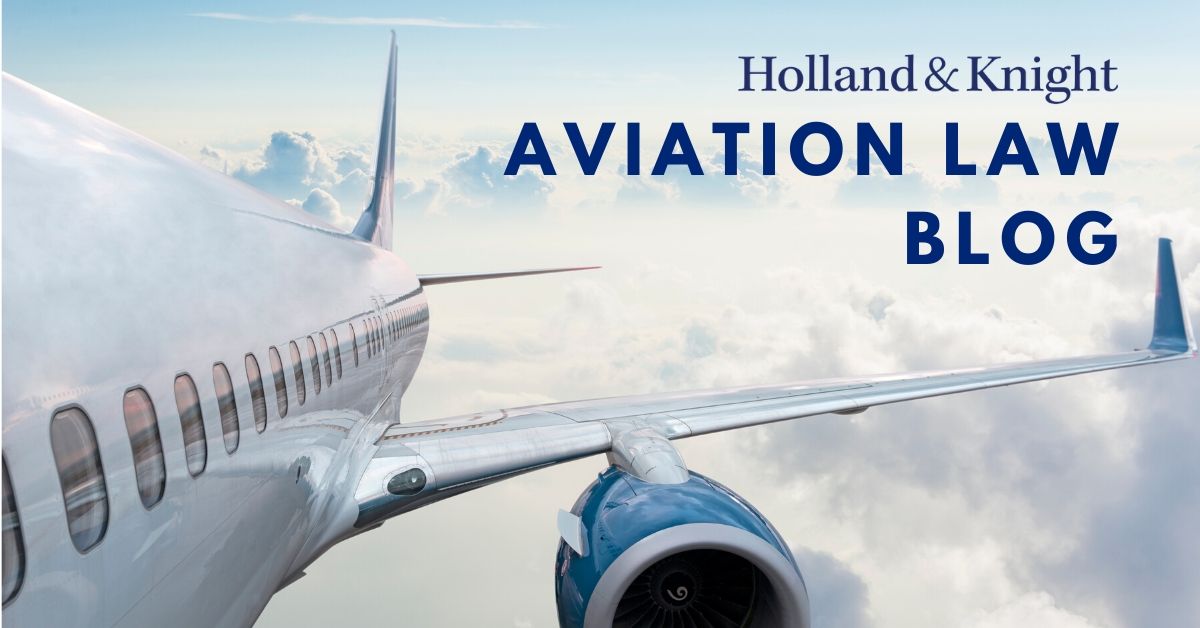FAA Proposes Regulatory Changes to Support Advanced Air Mobility Commercial Operation

The Federal Aviation Administration (FAA) on Dec. 7, 2022, published in the Federal Register a Notice of Proposed Rulemaking (NPRM), "Update to Air Carrier Definitions," that would incorporate "powered-lift" operations into the existing framework of regulations that govern air carrier and commercial air operations.1 If finalized as proposed, this rulemaking would amend the scope of authorized operations under the FAA regulations to include operations by advanced air mobility (AAM) aircraft utilizing Electric Vertical Takeoff and Landing (eVTOL) technology.
Many of the changes being made to the Federal Aviation Regulations2 are largely technical in nature and are designed to ensure that operations with powered-lift aircraft are covered under Parts 91, 119, 121, 125, 135 and 136 of the Federal Aviation Regulations.3 While the amendments are technical in nature, they are absolutely critical to ensure that the FAA's current regulatory framework is updated prior to new AAM aircraft being approved to operate in the U.S. National Airspace System (NAS). After the FAA's regulatory shift in the summer of 2022 to consider eVTOL aircraft as powered-lift aircraft, this NPRM is a signal that the FAA is acting expeditiously to ensure its regulations are updated accordingly. This rulemaking comes in advance of the 2023 legislative session, where Congress is expected to conduct considerable oversight over FAA's activities to enable AAM as it prepares to draft FAA Reauthorization legislation required to be enacted by Sept. 30, 2023.
By proposing to incorporate powered-lift aircraft into the existing regulatory framework, the FAA lays the groundwork for the eventual incorporation of eVTOL aircraft into the NAS. In justifying this action, the FAA observed that:
"Operations with powered-lift could offer many benefits over traditional rotorcraft. For example, some powered-lift may be capable of transporting heavier loads at higher altitudes and faster cruise speeds than a rotorcraft, while maintaining vertical takeoff and landing capability. Such capability may increase efficiency in transporting crew and material to remote locations such as offshore oil rigs. Operators may also seek to use powered-lift for transporting passenger's point-to-point; for example, such transportation could occur from a heliport and proceed at turboprop airspeeds and ranges. Other opportunities may also exist in concentrated urban environments, where short point-to- point distances coupled with vertical capability may allow for more efficient transportation of passengers or cargo than existing ground transportation methods. Application of the appropriate set of rules for powered-lift in a range of certificate holders' operations would serve as both a risk mitigation measure and a framework for FAA oversight, as necessary to achieve the requisite level of safety."4
We note, though, that while this is an important first step toward authorizing service with eVTOL aircraft, this proposal is the first of several regulatory actions required to authorize such operations. In addition to this action, the FAA will be issuing a Special Federal Aviation Regulation (SFAR), "Integration of Powered-Lift: Pilot Certification and Operations," which will establish temporary operating and airman certification provisions for powered-lift aircraft. The FAA indicates that it is issuing an SFAR instead of proposing entirely new regulations in order to "enable industry to begin operating powered-lift while FAA gathers data to develop permanent regulations through a future rulemaking."5 The FAA is publishing the airworthiness criteria of specific eVTOL aircraft on separate regulatory tracks.
Comments on the NPRM will be due 60 days after they are published in the Federal Register, which falls on Feb. 6, 2023. Members of the Holland & Knight aviation team will be monitoring the rulemaking and are available to address all questions as needed.
Notes
1 "Update to Air Carrier Definitions," 87 Fed. Reg. 74995 (Dec. 7, 2022).
2 Aviation operations are covered under Title 14 of the Code of Federal Regulations.
3 These Parts govern various certification and operating requirements for varying types of aviation operations.
4 NPRM, at 74996.
5 Id.
